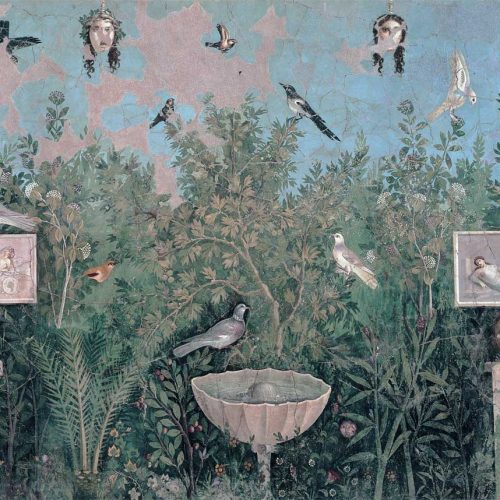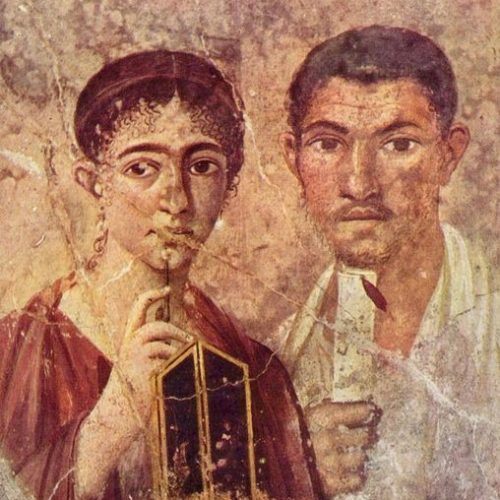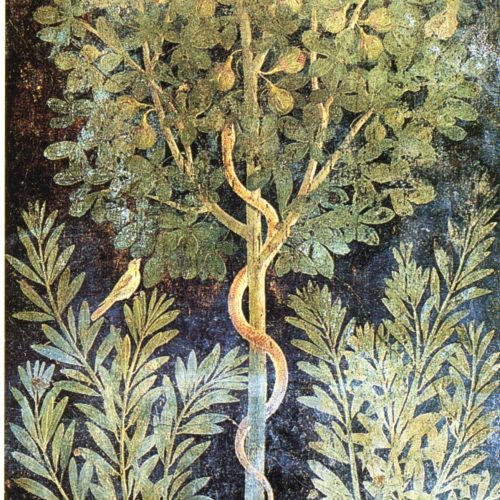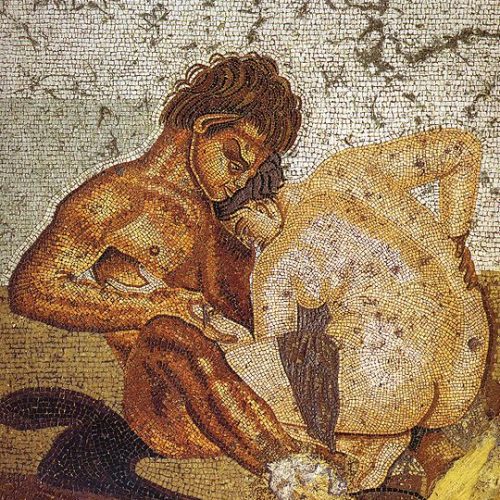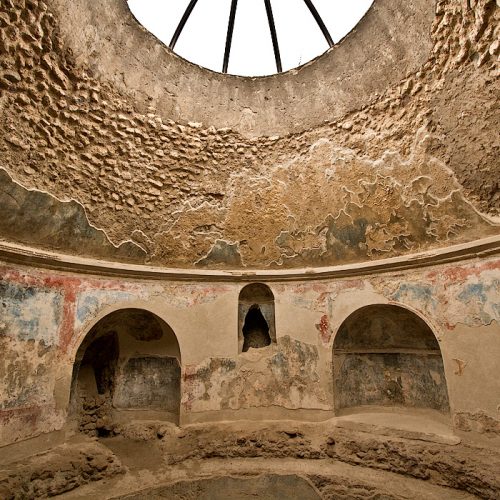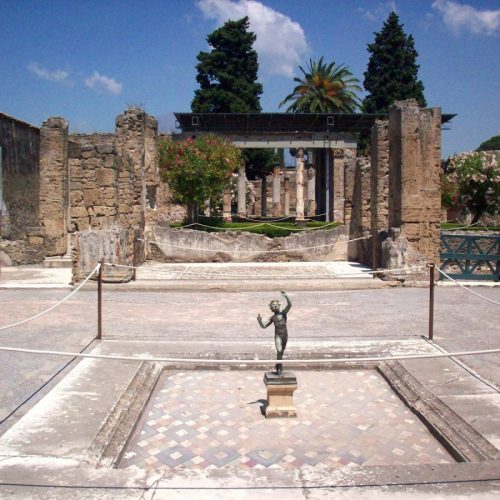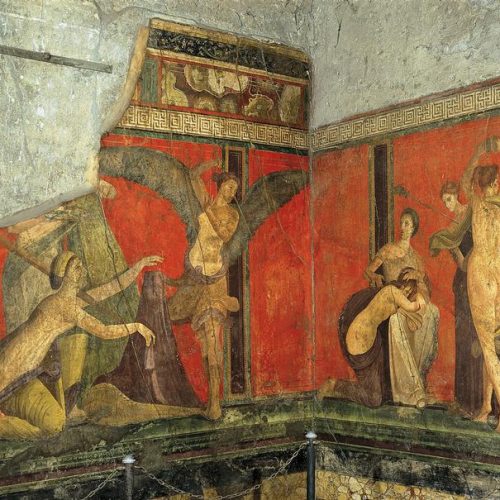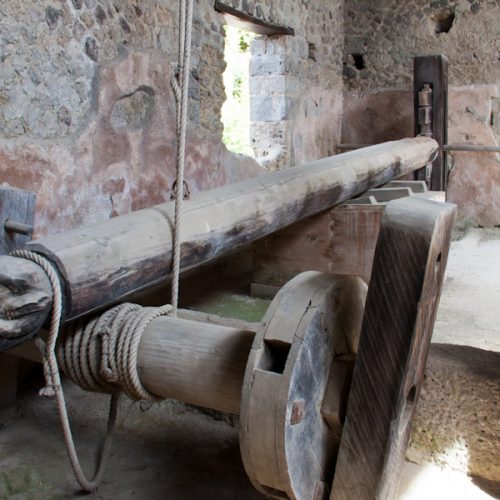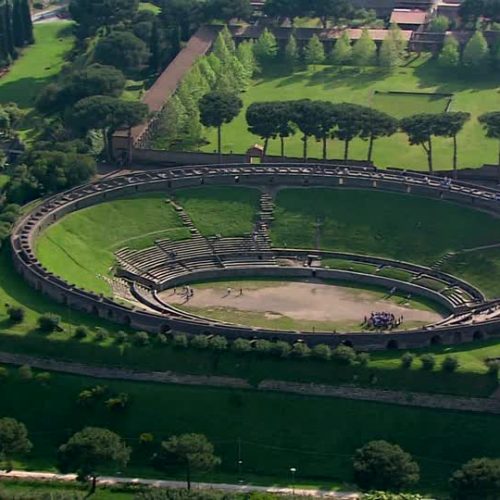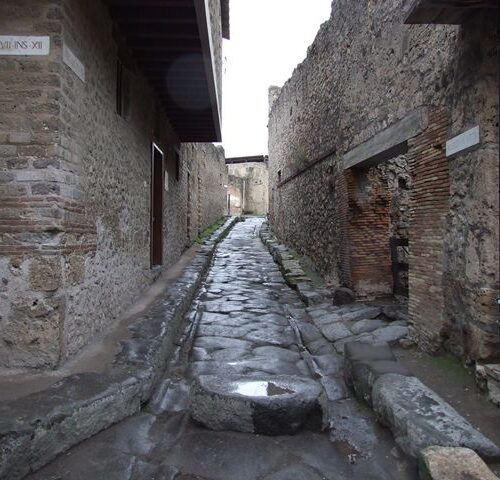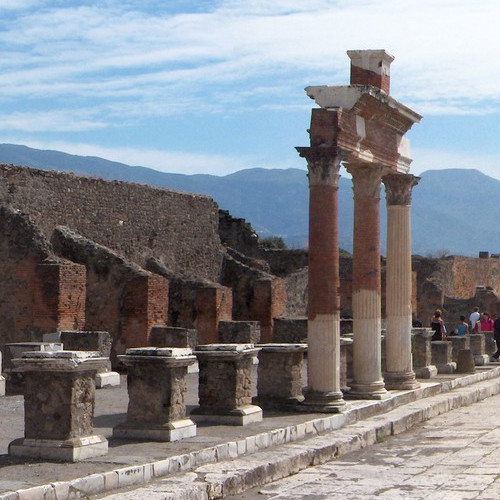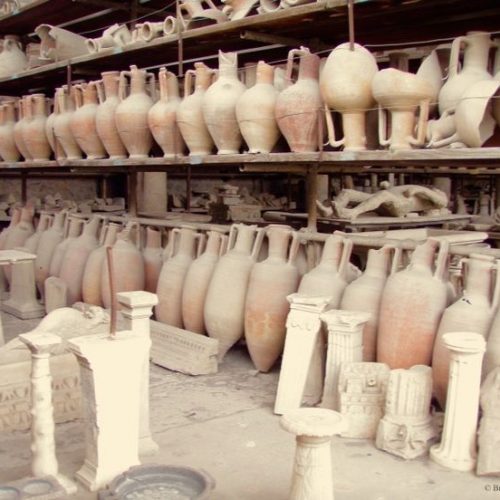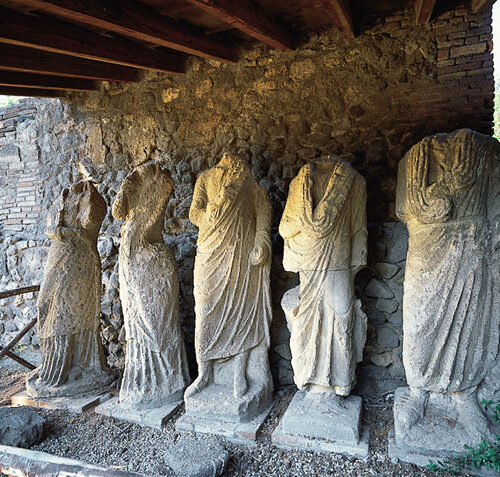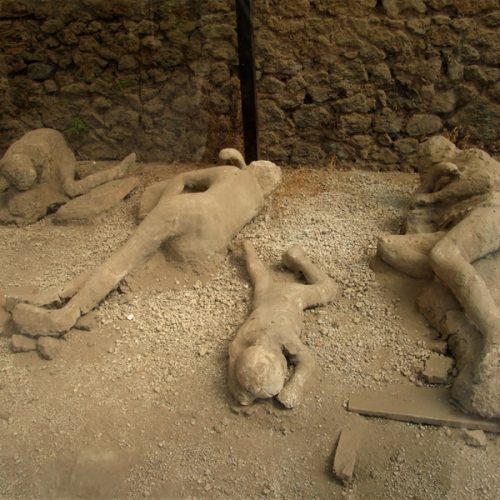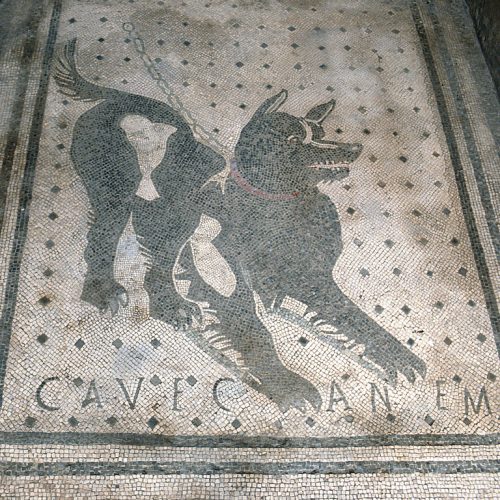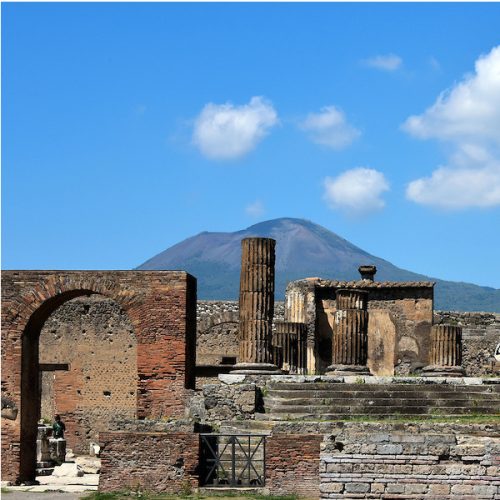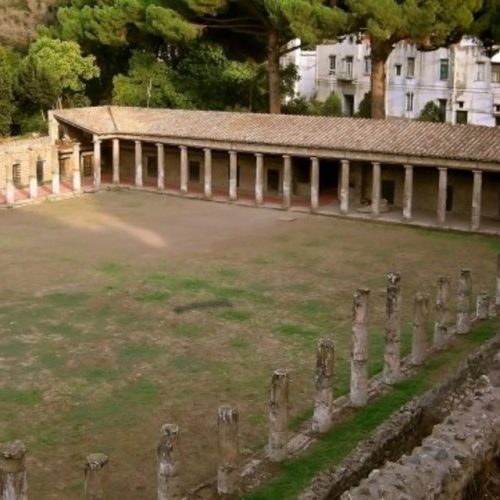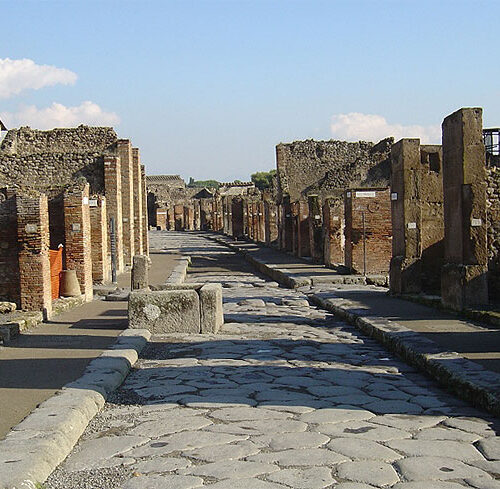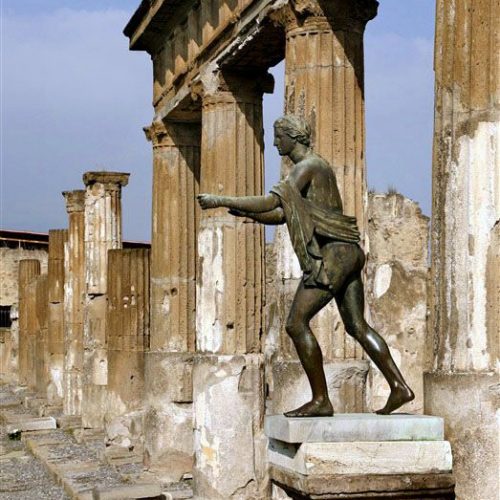A DAY IN POMPEII
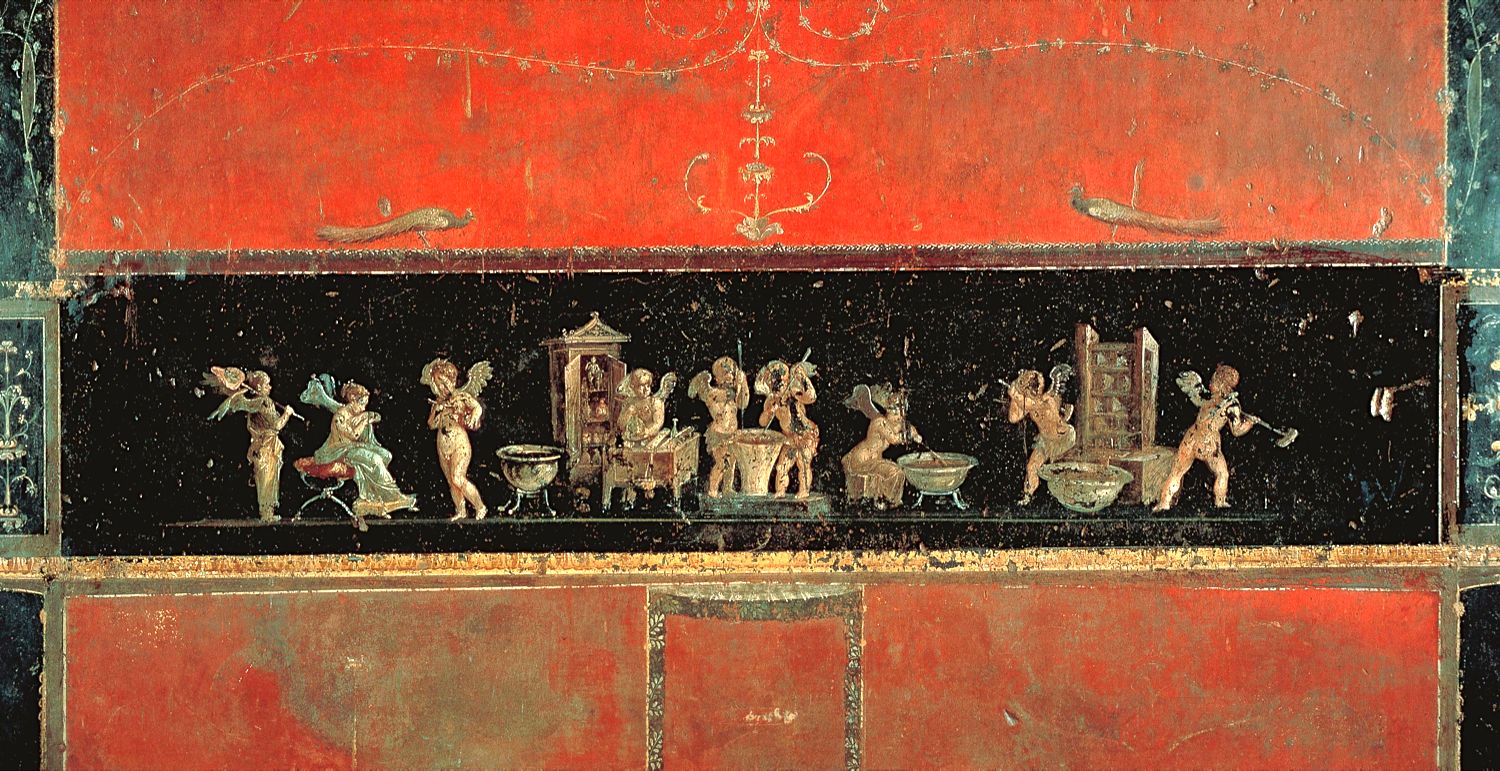
Pompeii is still a super coveted destination not only for those who love history and archeology in general but also for everyone who will enjoy the ruins of this city, buried under several feets of ash and rocks when Mount Vesuvius erupted in the summer of A.D. 79. Pompeii remained frozen in time until it was discovered in 1798 and the objects laying beneath the city have been well-preserved for centuries because of the lack of air and moisture. These artifacts provide an extraordinarily detailed insight into the vibrant Roman life of the city two thousands years ago.
Here is our guide for those who have a day or even more, our favorite spots and suggestions to live a day to the fullest in this extraordinary UNESCO site and one of the most popular tourist attractions in Italy with approximately 2.5 million visitors every year.
The Stabian Baths are the city’s most ancient bath building (2nd cent. BC). To the east there are the porticoed palestra and the bathing rooms, divided into women’s and men’s sections: frigidarium (with tub for cold bath), apodyterium (dressing room), tepidarium (warm room), caldarium (hot bath), furnaces (to produce heat). To the north is a large latrine, to the west a swimming pool. At the entrance and in the palaestra there are elegant decorations of mythological subjects.
Just ouside the city walls, there is a villa with farm, Villa of the Mysteries. It includes a residential section overlooking the sea and a servants’section next to the winery rooms (here stands a rebuilt grape press). Along the walls of the triclinium (dining room, where people seated on couches along three sides of the room) is the most famous Pompeian wall painting: a large fresco depicting a mystery ritual scene (whence the name of the villa), maybe a woman’s initiation to marriage.
The Amphitheatre, which was built in on the outskirts of Pompeii, is one of the oldest and best preserved amphitheaters in existence, and held over 20,000 spectators. The auditorium is divided into three sectors: the ima cavea (front row) for important citizens, and the media and summa, higher up, for everyone else. Like the Colosseum in Rome, gladiators had bloody battles with wild animals. Two gates opened onto the main axis of the arena: participants in the games paraded in through one gate, while the dead or injured were carried away through the other.
The Necropolis of Porta Herculaneum is the city’s best known, with buildings dating from the 1st cent. BC to the 1st cent. A.D. During this period deceaseds were cremated and the ashes stored in urns walled into the tomb, or buried and indicated with a marker in the shape of a human bust.
The House of the Tragic Poet at the entrance features the mosaic with a chained dog and the message “CAVE CANEM” (“Beware of the dog”), typical of other dwellings in Pompeii.
The House of the Faun with its 2,970 squared meteres it’s the largest one in Pompeii. The ruins of the house suggest a huge complex, with rooms, environments, and areas dedicated to different tasks. The entrance on the left leads directly into the public section, the door on the right to the private rooms: an atrium whose roof is supported by four columns, stalls, latrine, baths, kitchen. In the center of the impluvium (a low basin in the center of a household atrium, into which rainwater flowed down from the roof ) is a bronze statue of the dancing ‘faun’. The walls decorations, the mosaic paintings on the floor, columns and capitals of this majestic house highlight the richness of the Roman ruling class of Pompeii.
The Lupanare (Lupa in Latin means prostitute) is the best organized of Pompeii’s brothels and the only one designed specifically for this purpose: the others were single rooms or part of the top floor of a shop. The Lupanare consists of five rooms with paintings depicting erotic games. The prostitutes usually were Greek or Oriental slaves.
The Forum was located at the intersection between the two main streets of the Pompeii center. It was the city’s main square, where cart traffic was forbidden: it was surrounded on all sides by religious, political, and business buildings.
The Grain Stores (produce market) took the form of porticoed rooms and it’s now used to store various archeological materials from Pompeii (amphorae, architectural elements, marble garden furniture). A few plaster casts of Vesuvius victims are on display.
The Garden of the Fugitives was a large space of vineyards, where were created the plaster casts of thirteen Vesuvius victims. The plaster cast method consists of liquid plaster poured into the cavity left in the bed of ashes by the gradual decomposition of the victim’s body. As the plaster solidifies, it reproduces the body’s shape.
Getting there
- By train: to reach Pompeii use the Circumvesuviana. On the Naples – Sorrento line, use the Pompei Scavi-Villa dei Misteri stop. On the Naples – Poggiomarino line, use the Pompei Santuario stop.
- By bus: Pompeii can be reached by bus from Naples or Salerno on SITA. The stop is Pompei – Piazza Esedra.
- By car: Pompeii can be reached on the motorway A3 Napoli-Salerno (exit Pompei ovest) or motorway A3 Salerno-Napoli (exit Pompei est).
Start in the back. To avoid the crowds, move from the farthest temples toward the front. It’s best to enter Pompeii from the Porta Marina entrance. Here there’s a storage room for bags, strollers, and anything else you might not want to lug around Pompeii.
Wear flats. The site is huge: forty-four hectares have been excavated, but not all are accessible. The streets are very uneven and heels or even wedges are completely unsuitable for walking around the site.
Bring bottled water and some sunscreen. In summer you’ll be glad you did it, with the sun blazing on all those ruins.
Watch out for closings. Not all the attractions are open as they say they are.
Download the Pompeii app, a great guide right on your iPhone.
Limited time? Do a guided tour. Guided tours are very knowledgeable. and you can ask questions that can further explain things.




